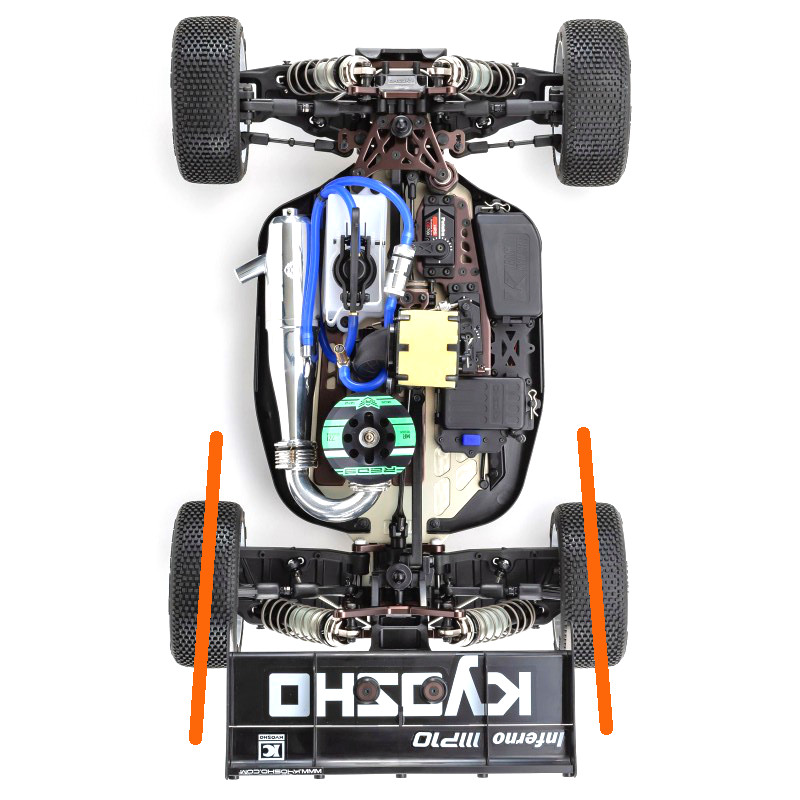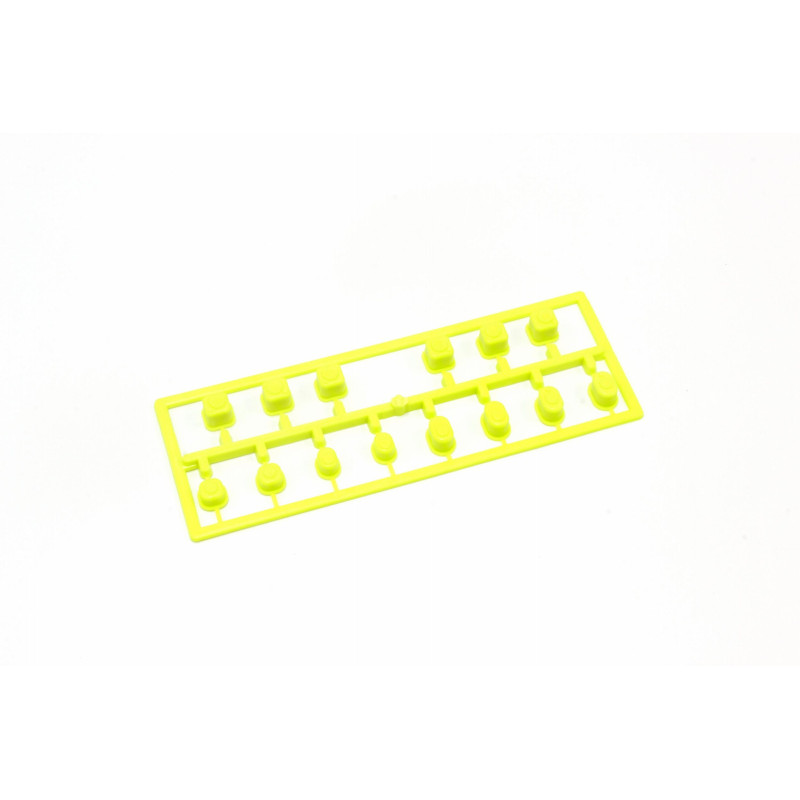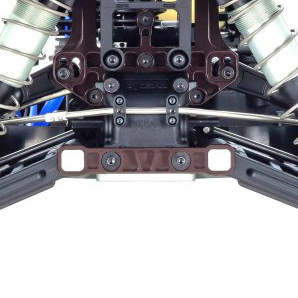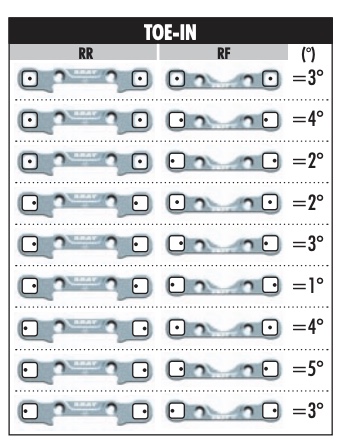Quick tutorial #1: toe-in, why and how to adjust it
Our Quick Tutorials are a simple way to understand the settings of your car in a few minutes.
A subject, a short video, in order to answer 2 essential questions: WHY and HOW?
VIDEO
WHY?
Let's start the quick tutorials with one of the most important points and which will have a big influence on the behavior of your radio-controlled car. Toe-in on the rear of your car. We will come back to the front end in another release.
Toe-in, by definition, is a difference in the parallelism of the wheels with respect to the central axis of the car.

In general, on the rear drivetrain, the angle is positive, that is to say that the front of the wheel is facing into the car. We are then talking about toe-in (when it's facing out of the car, we are talking about toe-out, but again, it is more for the front end in our case).
By increasing the angle, we will give a "snowplow position" effect to the rear wheels, and give it more stability.
When accelerating, the angle of the wheels will stabilize the car. 4wd buggies use rear toe-in values between 2 and 3.5 degrees per wheel depending on the model.
Consequently, the car will have less steering, with a more stable rear-end so you can face understeering.
We will seek to increase the toe-in angle on tracks with low traction, or in bumpy conditions.
In these cases, a car that is easier to drive will make you have better lines. Under these conditions, an easier car will be faster and you will make fewer mistakes.
On a rear wheel drive buggy (1/10 2wd 1/10 for example), it is not impossible to go above 3.5°, or even 4 °, which will greatly facilitate the go-around and acceleration.
Be careful, however, too much toe-in angle will cause the rear end to dump violently. The rear end will hold, hold, then lose all of its hold at once, in a violent and random manner. In this case, the angle must be reduced.
Conversely, a very low toe angle will give a more responsive, more nervous car.
For demanding drivers looking for speed, we will reduce the angle to the minimum, to create a nice rotation of the rear end in the corners, and therefore a faster corner speed.
On tracks with high grip or synthetic surfaces, in 1/10 for example, the toe-in angles are very low and it is common to find setup sheets with 1 or 2 °.
HOW?

It's one of the settings that will have the most impact on your car, but it's also one of the easiest to change!
Most models today feature small eccentric bushings in the toe blocks. They allow, by spinning them, to adjust the value of the toe-in angle in small increments.
The more the bushing hole points outward from the car, the more toe angle you add, and vice versa.

The inserts are usually marked with the values, 2, 2.5, 3.0 etc. If not, check in the instruction manual.
Finally, some models allow you to manage the toe-in angle only with D toe block (the aluminum A-arm mounts furthest to the rear of the car), and others with the 2 blocks (C and D, the 2 blocks from the rear drivetrain). In both cases, refer to the assembly manual to help find the right balance.

It is therefore up to everyone to find their comfort zone, to have a rear end which is sufficiently stable to be comfortable when going around, but not too much either to be able to keep a good corner speed. Now it's your turn ;-)
See you soon for a new episode!
The Shark
Reno Savoya
Share this content
